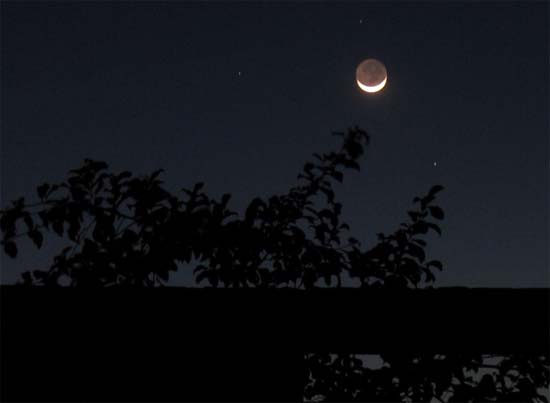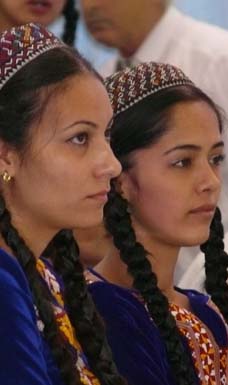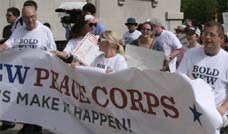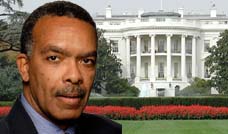
In an interview, Pieters put her exhilaration over the nitty-gritty of the new discovery into the context of her personal journey in the sciences. A self-described "Army brat" who traveled a lot as a child, Pieters graduated from Antioch College in 1966, taught high school math for a year in Somerville, Mass., and did a stint in the Peace Corps - returning from Malaysia during the summer of 1969, when men first walked on the moon. Pieters partly credits her career path to that coincidence, plus a casual assignment early in her graduate studies at the Massachusetts Institute of Technology: She was asked to file NASA photographs of the moon missions. Pieters worked at NASA in the late 1970s and has continued the association since her arrival at Brown in 1980. Pieters wore a visual pun at Thursday's news conference - a rainbow-colored vest to highlight her specialty of detecting minerals with the use of a spectrometer. The device reads the infrared emanations of minerals from the moon's surface; it produces images that break the light into the colors of the spectrum - blue in the case of the freshly discovered water traces.
Malaysia RPCV Carle Pieters key geologist in moon finding
Brown geologist key in moon finding
01:00 AM EDT on Friday, September 25, 2009
By JOHN E. MULLIGAN
Journal Washington Bureau
WASHINGTON - Carle Pieters shed tears of joy last Nov. 19 when the Moon Mineralogy Mapper aboard a distant satellite began to flash its colorful images onto a great screen in the Bangalore headquarters of the Indian space agency.
"When we saw that first image, we were elated," said the Brown University geologist, describing how her American and Indian collaborators reacted to the first surge of success in a mission that had consumed them for years. Their 20-pound measuring instrument was working in space and, far from the old gray rock of earthbound imagination, it showed a moon of "spectacular spectral variation!" recalled colleague Robert Green.
That wasn't the half of it.
The elation slowly gave way to astonishment as their analysis yielded one of the most spectacular findings in the annals of moon gazing: traces of water across large expanses of the lunar surface. "This is impossible," Pieters recalled thinking. "The moon does not do this."
But yesterday, after months of painstaking efforts to disprove and, later, to corroborate their dramatic discovery, Pieters and her colleagues discussed it at the headquarters of the National Aeronautics and Space Administration. "Widespread water has been detected on the surface of the moon," she declared.
But the scientists took pains to put their discovery in perspective. Stunning as the finding was, the moon remains parched by terrestrial standards.
"When we say ‘water on the moon,' we are not talking about lakes, oceans or even puddles," Pieters said in a statement issued in conjunction with the announcement. "Water on the moon means molecules of water and hydroxyl [hydrogen and oxygen] that interact with molecules of rock and dust."
"Even the driest deserts on earth have more water" than the dampest areas of the moon, explained Jim Green, director of NASA's Planetary Science Division. University of Maryland astronomer Jessica Sunshine (a onetime student of Pieters at Brown) estimated that a two-liter bottle full of moon dirt would contain perhaps a medicine dropper of water.
All the same, said Green, "water-ice," as he called it, has long been a "Holy Grail" for lunar scientists.
That's because the new discovery makes the moon much wetter than scientists had believed it could be. There's probably no more than a tablespoon of H{-2}O in the entire crop of moon rocks - all 840 pounds - that the Apollo astronauts harvested and brought home in the 1960s and 1970s, said Green, hence the conventional wisdom of a bone-dry moon.
Other scientists have speculated that yesterday's announcement could have promising implications for the possible extraction of water from the moon in future exploration.
In an interview, Pieters put her exhilaration over the nitty-gritty of the new discovery into the context of her personal journey in the sciences. A self-described "Army brat" who traveled a lot as a child, Pieters graduated from Antioch College in 1966, taught high school math for a year in Somerville, Mass., and did a stint in the Peace Corps - returning from Malaysia during the summer of 1969, when men first walked on the moon.
Pieters partly credits her career path to that coincidence, plus a casual assignment early in her graduate studies at the Massachusetts Institute of Technology: She was asked to file NASA photographs of the moon missions. Pieters worked at NASA in the late 1970s and has continued the association since her arrival at Brown in 1980.
Pieters wore a visual pun at Thursday's news conference - a rainbow-colored vest to highlight her specialty of detecting minerals with the use of a spectrometer. The device reads the infrared emanations of minerals from the moon's surface; it produces images that break the light into the colors of the spectrum - blue in the case of the freshly discovered water traces.
Pieters helped to design the Moon Mineralogy Mapper, or M3, that rode the Indian satellite mission Chandraayan-1 into moon orbit.
The discovery of the water traces was a classic story of scientific collaboration - and well-exploited luck. Because their basic mission was in-depth mapping of the moon's minerals, water was the last thing the scientists were looking for. They did not see that part of the picture before them for many weeks.
When one member of the team presented it to the others in February, all ascribed the finding to some quirk in the M3 measurements. In proper scientific fashion, they strove to knock down the finding and, when that failed, seek corroboration.
Enter Sunshine, Pieters' old Brown student, who realized that she might have just such evidence close at hand - somewhere in the spectroscopic measurements of Deep Impact, a satellite mission that had ended in a deliberate collision with a comet in 2005. With the help of that mission's leader - Peter Schultz, yet another Brown professor - Sunshine located mineralogical readings from an incidental passage that Deep Impact made between the earth and the moon.
"A total fringe benefit," Sunshine called the evidence in those images that backed up the M3's readings of water on the moon last year. Similarly, a third set of spectroscopy - from 1999 - was reexamined and found to contain more backup for the M3 discovery.
"When you have incredible results," said Robert Green, the NASA scientist in charge of the project's instruments, "you've got to have incredible date to support it."
Pieters offered this summary of the past year's lunar adventure: "The moon continues to surprise us."Ice on Mars
•A spacecraft orbiting Mars has spotted water-ice in several impact craters midway between the north pole and equator - the first time ice so close to the surface has been discovered so far south on the red planet.
 Instruments on NASA's Mars Reconnaissance Orbiter estimated that the newfound ice is 99 percent pure.
 The findings will be published in Friday's issue of the journal Science.
 This means "the recent climate of Mars was wetter than what we see today," said lead author Shane Byrne, an associate professor of planetary science at the University of Arizona. (AP)












